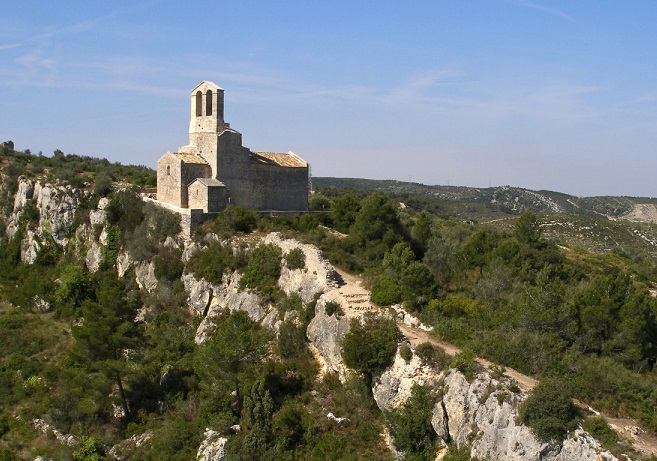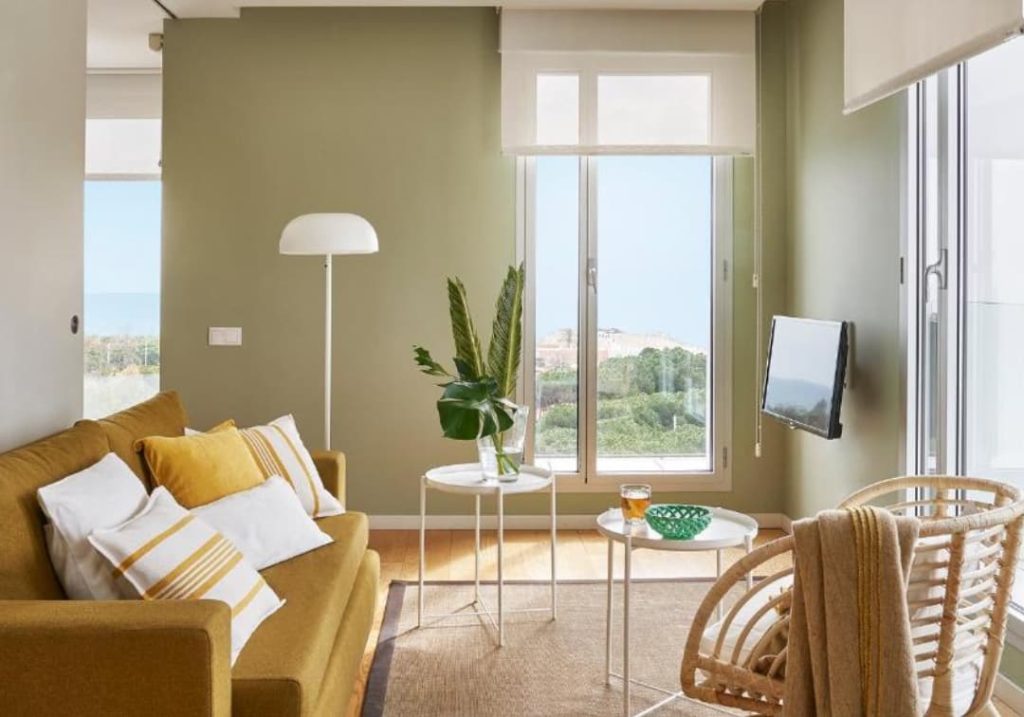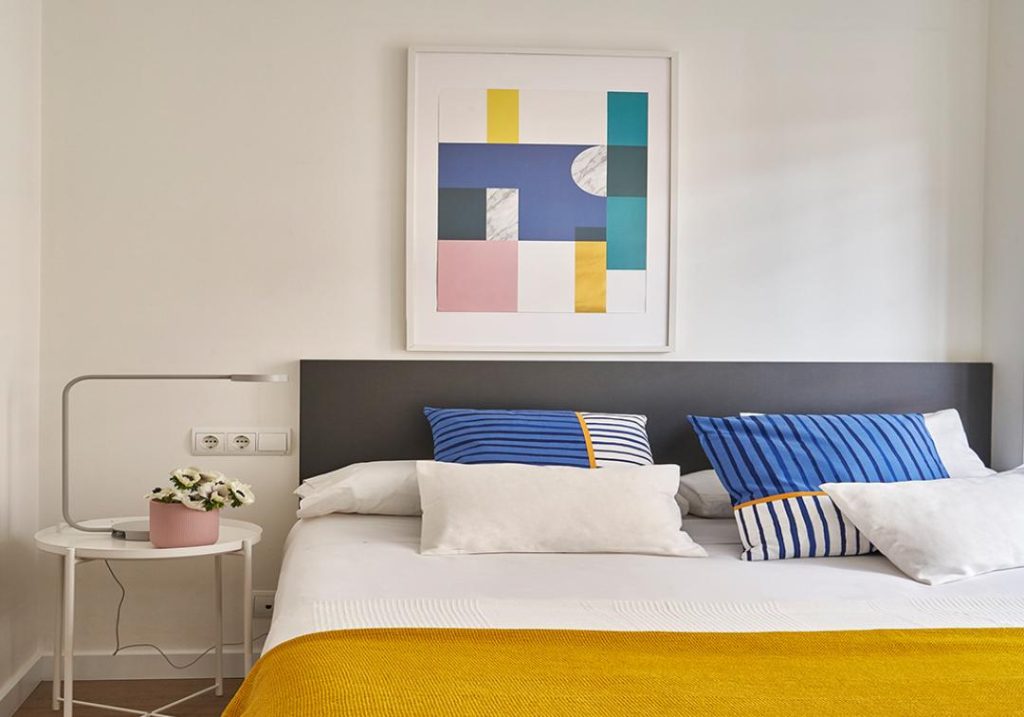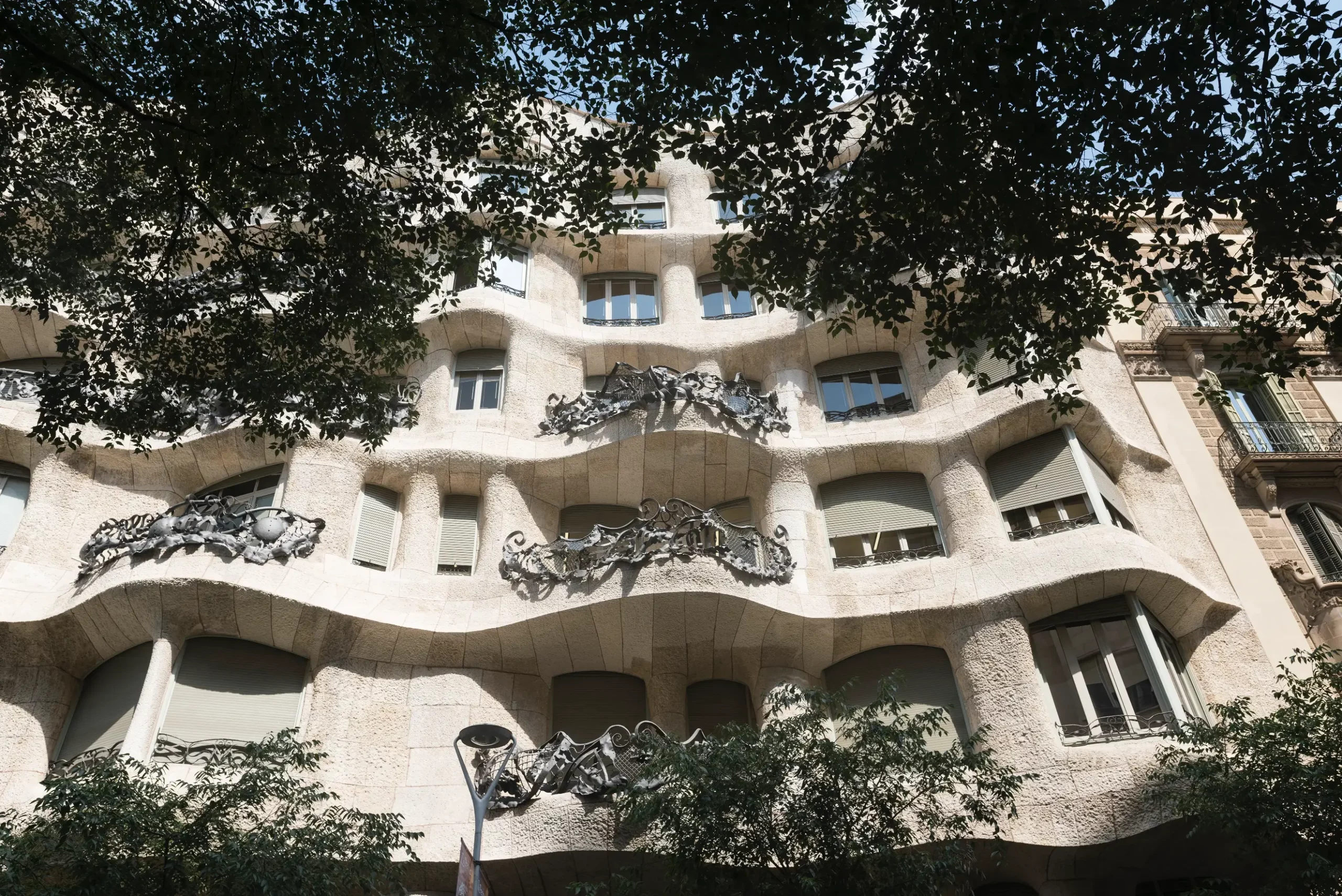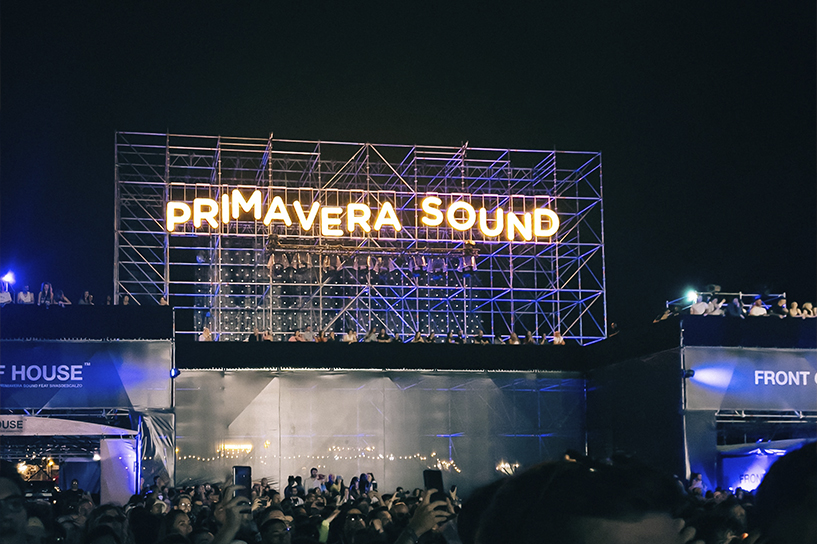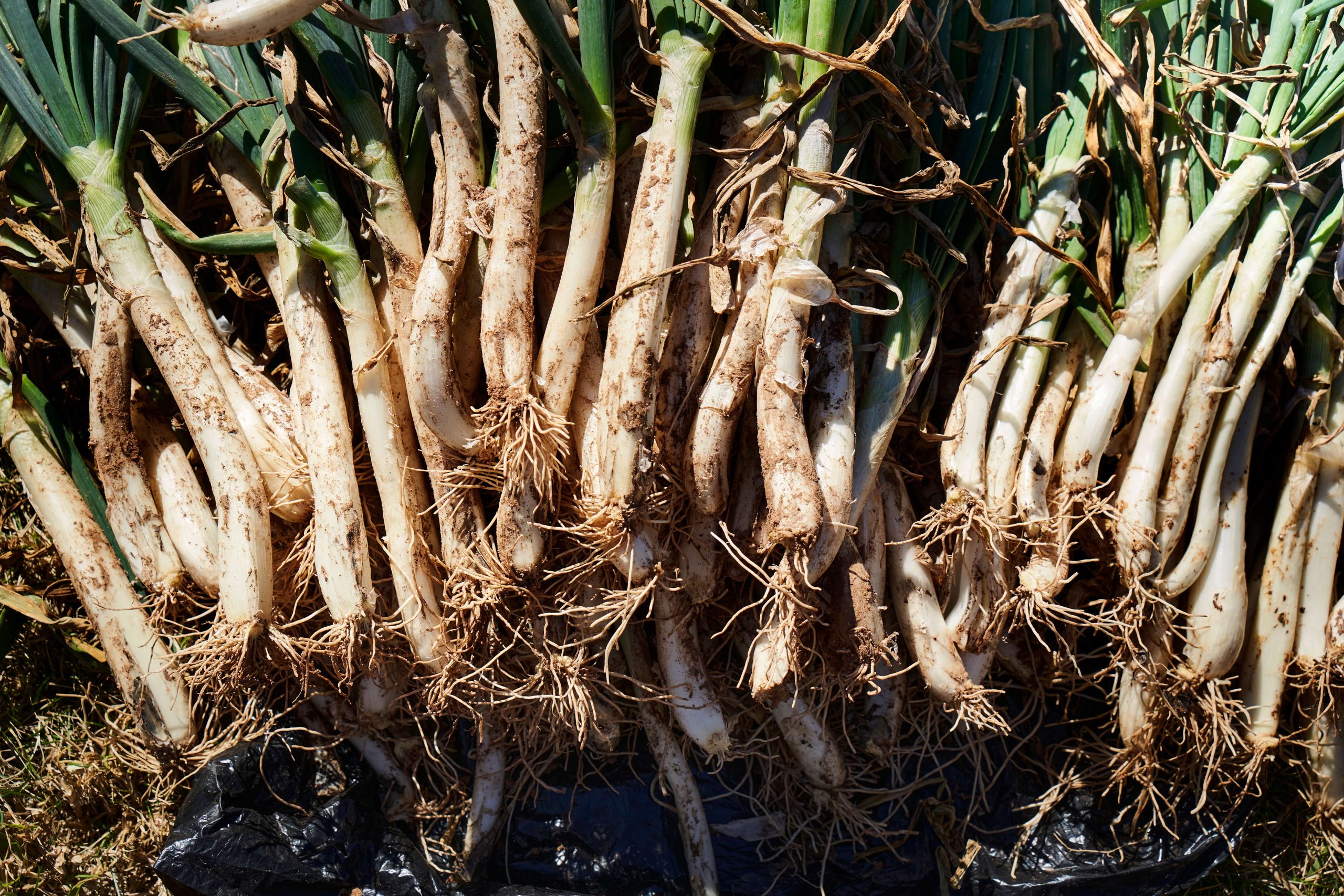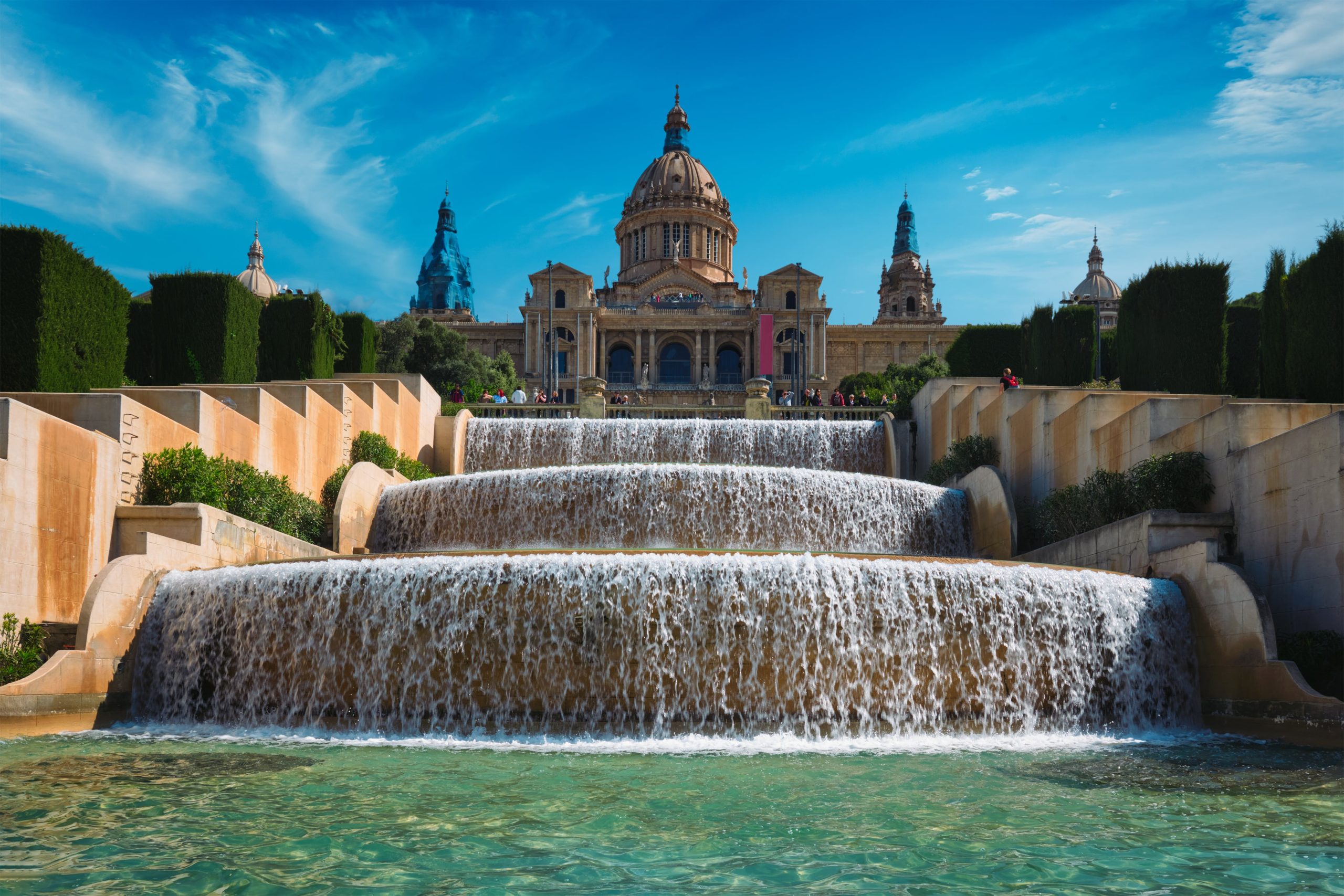- 1 1. El Born Centre Cultural i Memòria
- 2 2.The underground site on Plaça del Rei (MUHBA)
- 3 3. Iberian village of Puig Castellar, Santa Coloma de Gramenet
- 4 4. Iberian village of Ca n’Oliver, Cerdanyola del Vallès
- 5 5. Prehistoric Park of Capellades-Abric Romaní, Capellades
- 6 6. Torre del Llauder Roman villa, Mataró
- 7 7. Iberian and medieval village of L’Esquerda, Les Masies de Roda
- 8 8. Olèrdola archaeological site
Are you passionate about history? Are you one of those people who enjoy discovering the traces of ancient people and civilizations through their architecture? If so, and if you are planning a trip to the Catalan capital soon, we recommend that you don’t miss this small selection of the best archaeological sites in Barcelona, located both within the city limits and in the rest of the province.
Without a doubt, they will be the perfect complement to your stay in our apartments on the beach in Barcelona. Pay attention!
1. El Born Centre Cultural i Memòria
We begin our list of the best archaeological sites in Barcelona by visiting one of the most iconic neighborhoods in the city: La Ribera. We suggest you learn about its evolution from its birth, in the 14th century, to its partial destruction, in 1716, as a result of the War of Succession. In the place where there had been houses until then, a citadel was built, which in the 19th century was demolished to build the park of the same name.
In any case, some of the foundations of the old constructions were hidden under an old market, built in 1873 and operating until August 1971. It was in 2002 when, during some works to turn the enclosure into a library, this urbanistic treasure appeared. Its importance was such the council decided to convert this space into a museum, which was inaugurated in 2013.
This is one of the most relevant sites in Catalonia, as it shows a medieval and modern urban layout of more than 8,000 m². A network of sewers, streets, houses, palaces, bars and even an ice well have been located. Craftsmen’s businesses have also been documented, such as blacksmiths, textile workshops, wine cellars and boilermakers.
You will find it at the end of Passeig del Born, very close to the basilica of Santa María del Mar. Although access is free, you can book guided tours, for a fee, to go down to the level of the ruins and walk around the old city of the 18th century.
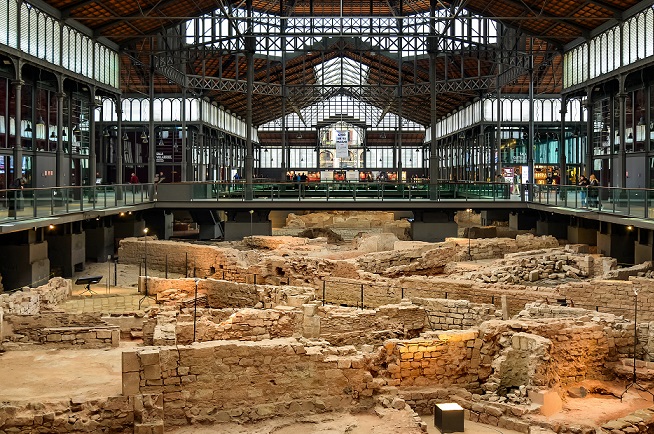
2.The underground site on Plaça del Rei (MUHBA)
Although we have already referred to this space when talking about Roman Barcelona, it is necessary to go back to it. We are talking about the monumental complex of Plaça del Rei, the founding nucleus of the Museum of History of Barcelona (MUHBA) since its creation in 1943.
The trigger for this institution was the transfer of Casa Padellàs, stone by stone, from Carrer de Mercaders to the site of Plaça del Rei, as a result of the opening of the Via Laietana. The foundation work on the house in its new location made it possible to locate the remains of the old Barcino, founded around 15 BC, and gave rise to a series of archaeological works that continued until the Civil War. The remains recovered and conditioned in the subsoil of the square also include part of the 7th century Visigothic Barchinona and the 13th century medieval Barcelona.
A visit to the museum will allow you to walk through the streets of Roman Barcelona, get close to the wall of the time, enter a dyeing shop from the 2nd century AD and see the archaeological remains of the city’s first Christian community, among many other surprises.
The complex is completed with important medieval buildings, such as the Palau Reial or the chapel of Santa Agueda.
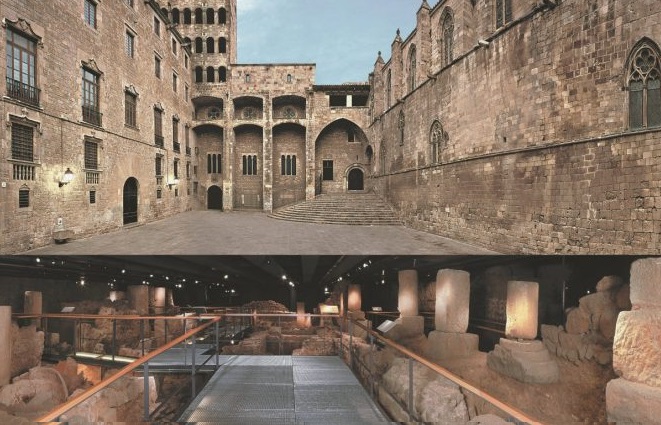
3. Iberian village of Puig Castellar, Santa Coloma de Gramenet
We continue with our review of the best archaeological sites in Barcelona by leaving the city and traveling to Puig Castellar, an Iberian village located on the Turó del Pollo (303 m), in the neighboring town of Santa Coloma de Gramenet. It was built by the Laietans, a Celtic tribe whose most important period was between the 6th and 3rd centuries BC.
This enclave was discovered between the years 1904 and 1905 by Ferran Segarra, owner of the lands on which it was located. In 1917, he donated the land to the Institut d’Estudis Catalans, an institution that promoted the excavations of the northern area of the settlement from 1922 to 1925.
In 1954, Puig Castellar hiking center organized several campaigns to finish excavating what was left of the settlement. During these campaigns, which lasted until 1958, important discoveries were made, such as a terracotta head of Tanit, the Phoenician goddess of fertility, and a trepanned skull. These findings are preserved in the Museum of Archaeology of Catalonia in Barcelona and in the Torre Balldovina Museum in Santa Coloma de Gramenet.
This settlement has three elliptical, longitudinal streets that house more than thirty houses, so experts deduce that this nucleus had around 300 inhabitants. Agriculture and livestock were as their main form of subsistence, as well as metallurgy and textiles. A peculiar feature is that not all the houses were at the same height of the village: the higher a house is, the greater the importance that its inhabitants had in the Iberian society, that is why it is also believed that the highest area of the village was the one destined to the most relevant buildings.
Nowadays, the archaeological site can be visited for free. There you will find explanatory boards that make it easier to understand the archaeological site.
To get there, you can take the B-30 bus to the final stop of Ramon Berenguer IV. You can also take the 800 bus and get off at the Menorca/Mirador dels Ibers stop. From there, walk up the hill along the Torrent de les Bruixes. However, if you prefer to get there by car, drive along the BV-5011 road. When you reach the hill, continue through the Vallensana urbanization and walk up to the last section of this small hill by taking the forest track.
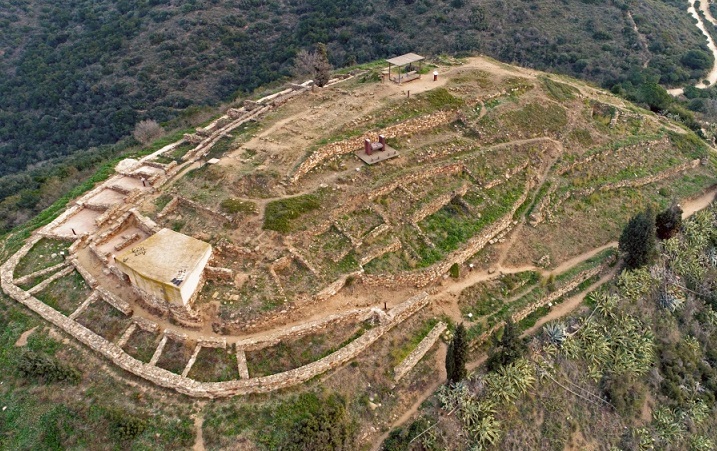
4. Iberian village of Ca n’Oliver, Cerdanyola del Vallès
We are not moving far away from the Iberian culture yet, as we have another interesting site from this period on the hill of Ca n’Oliver, a 136 m high hill belonging to the Collserola mountain range and the municipality of Cerdanyola del Vallès. This site was occupied from the 6th century BC to the 1st century BC, and later during the High Middle Ages. It is a large settlement that occupies the entire upper part of the hill and was protected by a defensive system formed by moats, towers and gates. Inside, the urban settlement was adapted to the hill by means of terraces arranged in rows of terraced houses, forming a kind of neighborhoods arranged through streets. Outside, there was a large field of cellars.
From the village of Ca n’Oliver, the elites controlled the agricultural production that was developed in the vicinity. In the Middle Ages, the hill was repopulated. Archaeological excavations have documented traces of constructions and cellars corresponding to the High Middle Ages on the northern slope.
The settlement is located at 19, Carrer de València, in Cerdanyola. If you are enjoying a break in Barcelona, the most convenient way is to take a Rodalies Renfe train to the Cerdanyola del Vallès stop and walk from there – check out the visiting hours!
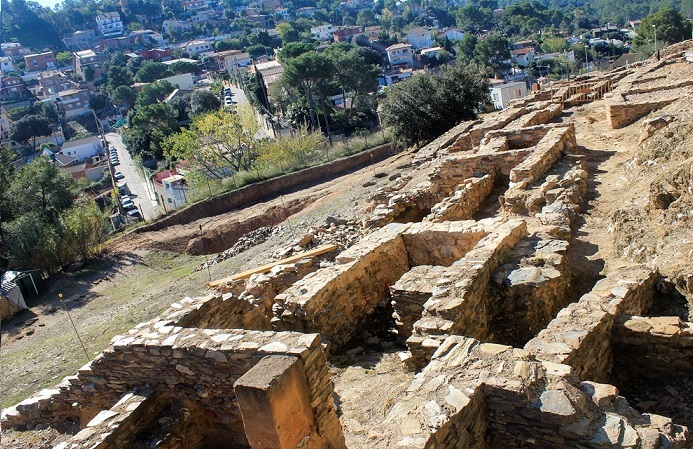
5. Prehistoric Park of Capellades-Abric Romaní, Capellades
This place, one of the main attractions of the town of Capellades, was found in 1909 by Amador Romaní, who discovered the main Palaeolithic sites in the region. Its importance lies in the fact that it is the oldest prehistoric site in Catalonia from the middle and beginning of the upper Palaeolithic period. There is also evidence that shows the existence of human presence between 72,000 BC and 30,000 BC. The remains of various inhabited areas and a tree cut down by the Neanderthals 56,000 years ago have also been discovered. Among the main remains found, a premolar and three human molars stand out.
Currently, a team of archaeologists continues to work every August. This archaeological zone, known as the Capellades Prehistoric Park, has been fitted out with a guided educational itinerary, and interesting visits and workshops are held for children and adults.
It is located at Ronda de Capelló, 5, Capellades. The most recommended means of transport is going by car.
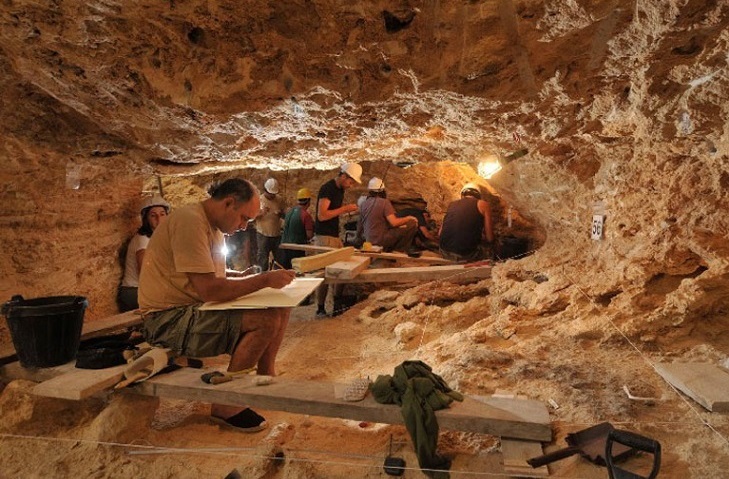
6. Torre del Llauder Roman villa, Mataró
The Roman villa of Torre Llauder is located in the municipality of Mataró, in the Maresme region of Barcelona. It is located in the district of Pla d’en Boet, about 1,300 m from the historical center of the city and about 600 m from the original route of the Via Augusta. At this site, a part of the residential area of the town is preserved, with several rooms distributed around an atrium. It was built in the 1st century A.D. and was inhabited until the 5th century, when a fire, a group of skeletons and the collapse of the building as a result of the flames were documented.
In 1961, the first excavation was carried out using archaeological methods. These works put in value the rich mosaics that were preserved, and that helped to declare the site as a Historical and Artistic Monument of National Interest in 1964. Since 2010, as part of the preparations for the 50th anniversary of the first excavation, the mosaics have been restored and protected with a tent.
You can visit this tourist attraction at Carrer de Castaños, 175, in Mataró. To get to this city, we recommend you take a train from the R1 line of Rodalies Renfe.
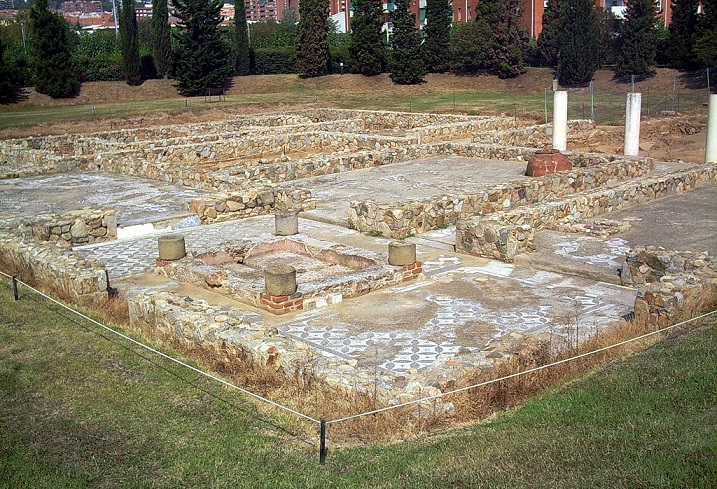
7. Iberian and medieval village of L’Esquerda, Les Masies de Roda
The municipality of Roda de Ter, located in the Osona region of Barcelona, is home to this magnificent Iberian and medieval settlement, where the human presence has been documented since the 10th century BC.
At the end of the 5th century B.C. or beginning of the 4th century B.C., the Iberian village was fortified and organized. A dry-stone wall is also believed to belong to this period. On the outside, there are two solid towers, one square and the other rectangular, that flank the street, protecting the access door to the village. At the end of the 3rd century BC, the village or oppidum suffered a serious fire that destroyed a large part of the settlement. This forced its reconstruction a century later. The abandonment of the Iberian village came in the 1st century B.C.
Although no Roman settlement has been documented, the excavation campaigns of recent years have shed light on the little-known Visigothic occupation, around the 7th century. The work has uncovered a section of the wall and a group of cellars and burial sites. At the end of the 8th century, in order to stop the Muslim advance, the Carolingian Franks fortified the line of the River Ter at key points: Savassona, Sant Pere de Casserres and L’Esquerda, reinforcing the Visigothic wall with a series of square towers.
From the 10th century onwards, a necropolis of anthropomorphic tombs excavated in the rock was built. The dwellings of this early medieval period are houses made of stone and have a square floor plan.
To reach the site, you must go by car to Carrer del Comtat d’Osona, s/n, in the town of Les Masies de Roda.
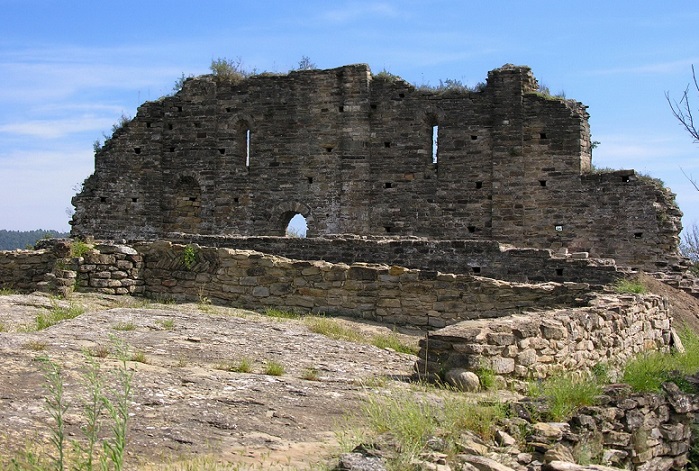
8. Olèrdola archaeological site
We close our tour of the best archaeological sites in Barcelona in Olèrdola, a place that we already included in our post about what to visit 80 km from Barcelona. This impressive historical site stands on the hill of San Miguel (358 m), in a buttress of the massif of Garraf.
Although the oldest archaeological findings correspond to the beginning of the Bronze Age (2000 BC-1800 BC), towards the end of the 2nd century BC, the Romans established a military camp to control the Herculean route – later renamed the Via Augusta – that crosses the region. They built an impressive wall in front of the previous one, with towers with a quadrangular plan. The great cistern excavated on the rock and the watchtower at the highest point of the enclosure belong to this period.
Around the year 929, a castle and a church dedicated to Saint Michael were built in the pre-Romanesque style. Later, the Romanesque temple was built in 992.
The castle was built next to the Roman watchtower, at the top. The Romanesque church, located in the upper half of the platform, has a single nave, a quadrangular apse and a barrel vault. Above the portal there is a geminated window with a small column that has been reused from a previous construction.
The lower half of the enclosure was occupied by simple dwellings and a large number of cellars to store grain. Outside the fortification, the medieval settlement, formerly known as the Santa Maria neighborhood, now known as the Pla dels Albats, was extended with the ruins of a Romanesque church and a large number of graves in the rock.
The address of the enclosure is rambla del Castell d’Olèrdola, s/n, Olèrdola. To get there, you must travel by car.
As always, if you know of another site excavated in the rock, we encourage you to send us your comments.
